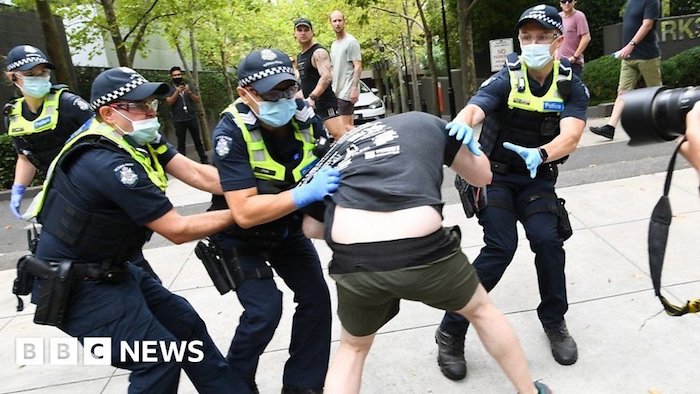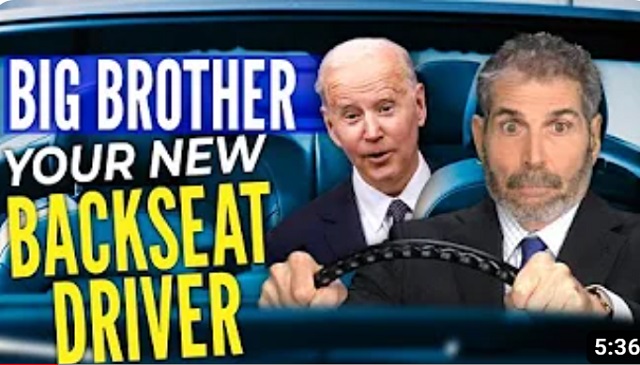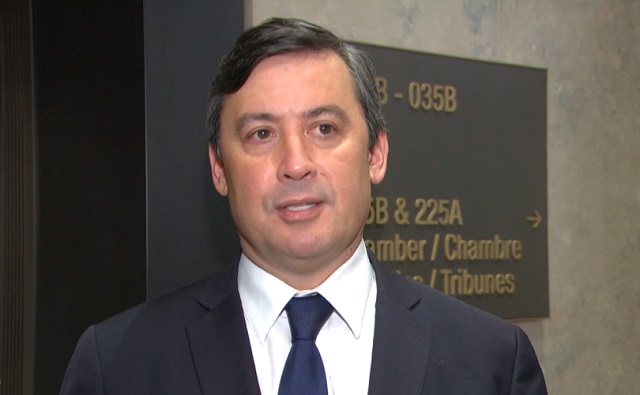Brownstone Institute
Evidence of Early Spread in the US: What We Know
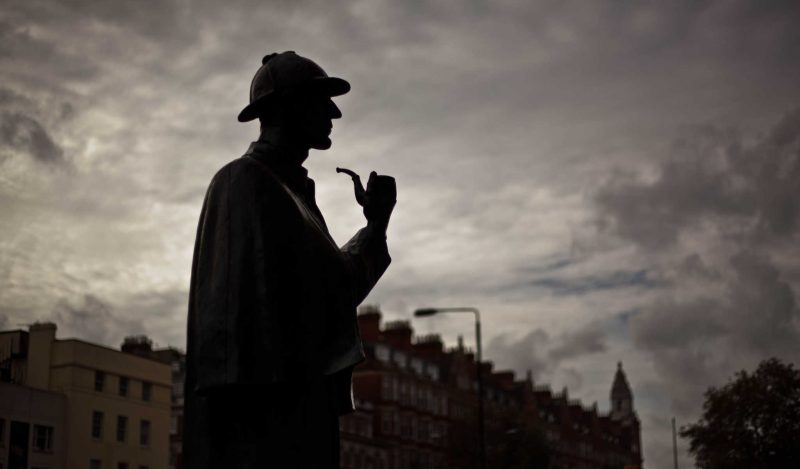
From the Brownstone Institute
BY
In Sir Arthur Conan Doyle’s short story “Silver Blaze,” Sherlock Holmes famously solved a murder case by noting a dog that didn’t bark.
Gregory (Scotland Yard detective to Holmes): “Is there any other point to which you would wish to draw my attention?”
Holmes: “To the curious incident of the dog in the night-time.”
Gregory: “The dog did nothing in the night-time.”
Holmes: “That was the curious incident.”
The “official” timeline of the spread of the novel coronavirus has been false from the very beginning. The “dog that didn’t bark” is the fact officials have refused to sincerely investigate the copious evidence of “early spread.”
When events and activities that clearly should have happened obviously did not happen, a truth-seeking detective would ask several common-sense questions.
For example: Why didn’t these activities take place? Are America’s trusted officials perhaps hiding something, and, if so, why? Should certain people and certain organizations be considered the primary suspects in one of the most shocking crimes in world history?
In previous articles, I identified 17 known Americans who possess antibody evidence of being infected by the novel coronavirus months before the virus was supposed to be circulating in America. Three of these Americans had antibody evidence of infection by November 2019.
I also recently identified at least seven other Americans who claim to have had Covid symptoms in November or December 2019 who state they later received positive antibody results. I’ve thus identified at least 24 known Americans who very likely had Covid at some point in the year 2019. Also and significantly, federal officials never interviewed any of these people.
Today’s deep dive into “early spread” evidence focusses on 106 other Americans who also had antibody evidence of early spread. These 106 Americans tested positive for Covid antibodies in a CDC study of Red Cross blood donors.
While the “Red Cross Blood Study” received a fair amount of media coverage when belatedly published on November 30, 2020, the “narrative-changing” or “seismic” implications of this study have still not been given the weight they deserve.
Conclusions flowing from this analysis include the following:
* By late December 2019, more than 7 million Americans had likely been infected by the coronavirus… more than three months before the lockdowns of mid-March 2020, lockdowns implemented to “slow” or “stop” the spread of a virus that had spread across the country and world many months earlier.
* “Probable” cases of Covid had already occurred in at least 16 U.S. states by January 1st, 2020 – weeks or months before the first “confirmed” case of Covid in America was recorded January 19, 2020.
- Antibody studies of archived blood in Italy and France also support the hypothesis that that virus had infected large numbers of people in these two nations as early as September 2019.
Key unanswered questions include:
Why was the Red Cross blood study the only antibody study of blood samples collected by blood bank organizations?
Why did it take so long to publish the results of this one Red Cross blood study?
When did officials test this blood and when did U.S. policy makers know the results?(This is literally a trillion-dollar question. Also, If this blood had been tested earlier, millions of lives might have been saved).
Why didn’t officials interview the 106 Americans who had antibody evidence of prior infection?
It’s possible at least some public health experts may have intentionally concealed evidence of early spread. Reasons prompting this disturbing conclusion are presented below.
The first known knowable
Between December 13-16, 2019, 1,912 Americans in the states of California, Oregon and Washington donated blood via the American Red Cross. Another 5,477 Americans also donated blood via the Red Cross between Dec. 30, 2019 and January 17, 2020. These donors were from the states of Massachusetts, Michigan, Rhode Island, Connecticut, Wisconsin and Iowa.
At some point, the CDC decided it should test these 7,389 samples of “archived” blood for Covid antibodies. When this took place – and why it took so long for this to happen – are two of many still-unanswered questions.
DISCUSSION – Tranche 1 (California, Oregon and Washington)
Of the 1,912 samples tested for Covid antibodies, 39 were positive for IgG and/or IgM antibodies.
The above represents 2.04 percent of the total samples from this tranche. In samples tested from the Red Cross’s Northern California district, 2.4 percent of the sera samples tested positive for Covid-19 via an ELISA assay.
If this was a representative sample of the American population, 2.04 percent would translate to approximately 7.94 million Americans who had already been infected by this virus in the weeks before Dec. 13-16. (Math: American population of 331 million x 0.024 percent = 7.94 million).
If we include both tranches, the 106 positive donors represents 1.43 percent of the larger “sample group.” This seroprevalence rate would translate to 4.73 million Americans nationwide being infected by some time in early January 2020.
We’re not supposed to perform this extrapolation
Public health officials working overtime to hype the fear factor must appreciate the fact journalists in the mainstream press did not perform the extrapolations I just performed above.
This particular “dog that didn’t bark” (a press that wouldn’t perform common-sense extrapolations) is probably explained by language/guidance the authors included in the study.
From the study: Findings “may not be representative of all blood donors or donations in these states and the findings may not be generalizable to all blood donors during the donation dates reported here. Therefore, population-based seroprevalence estimates or inference on magnitude of infections on a national or state level cannot be made.”
I did note the authors used the words “may not be generalizable to all blood donors during the donation dates reported here.” To me, this choice of words does not rule out the possibility these results may be generalizable to the larger population.
The authors’ reasons that readers should not “generalize” the results to the entire population are unconvincing. A random group of blood donors is about as good a sample as one can perform. For example, this was NOT a “biased” sample of people who thought they may have had Covid earlier.
This sample almost certainly undercounts virus prevalence in these states
In mainstream press stories about this study, all of them report as fact that this study dates the possible beginning of virus spread to December 2019. This is not accurate. The findings, for reasons outlined below, actually reveal that Americans were becoming infected in November 2019 or (almost-certainly) even earlier.
Regarding the possibility the sample may have under-counted true prevalence, the following points should be considered.
Some of the donors, especially those who had asymptomatic cases and never even knew they were sick, may not have had time to develop antibodies by the time they donated blood. Per one study, “the average time to detectable neutralization was 14.3 days post on-set of symptoms (range 3-59 days.)”
Also, it’s possible some of the donors may have had detectable levels of antibodies at an earlier date, but those antibodies had “waned” or “faded” and were no longer “detectable” at the time they gave blood samples.
Furthermore, all regular blood donors know that they should not donate blood if they have recently been sick. This deduction further backs up the possible date of infection for some “positive” donors by at least two weeks.
Also, backing up the true “infection date” of many of the donors is the fact that 32.23 percent of the donors who tested positive for “neutralizing antibodies” tested negative for the IgM antibody and positive for the IgG antibody.
Per many studies, IgM-positive antibodies only persist for approximately one month. That is, after 30 days, those who were previously infected by Covid will test negative for IgM antibodies. However, IgG antibodies can last for many months, years or, in some people, perhaps a lifetime.
Per the Red Cross study, 32 percent of donors were negative-IgM but positive IgG, which suggests that approximately one-third of this sample were infected a month or more before they donated blood. This combination of antibody results would push likely infection dates back to October (or even September) for some percentage of positive donors.
We don’t know when these people in the three Western states (or the other six Midwestern and Northeast states) may have been infected – but for probably most of them it would have been many weeks or even months before they donated blood.That is, the “Red Cross blood study” provides compelling evidence that early spread in America probably occurred by at least early October and perhaps even September.
What does the word ‘spread’ really mean?
Also, the fact that positive samples were found in ALL nine states (California, Oregon, Washington, Massachusetts, Michigan, Wisconsin, Iowa, Connecticut and Rhode Island) by itself strongly suggests virus “spread.” Question: How could a virus be infecting people in nine widely-dispersed states without first “spreading?”
To these nine states, we can add seven other states (New Jersey, Florida and Alabama) from my first round of stories and now also New York, Texas, Nebraska andNorth Carolina from my most recent story where readers with antibody evidence contacted me. This gives us 16 states where this allegedly non-existent or “isolated” virus had infected people before the first official case in America.
I would also note that whatever virus made many of these people “sick” spread between family members. For example, at least four married couples infected each other and/or at least one child. Mayor Michael Melham says “many” people at the conference where he first became sick with Covid symptoms also became sick at the same time, which, to this layman’s definition, connotes virus “spread.”
To the above numbers, we could add all the unknown individuals who infected these people … as well as the unknown individuals who infected these unknown individuals.
It should also be noted that the Red Cross blood study was not a perfect sample as blood donors are much older than the median age. In this sample, the median age was 52 – 13 years older than the U.S. median age of 38.6. Common sense tells us that older retirees do not interact with nearly as many people on a daily basis as more active younger people.
I’ve also come to believe it’s possible that officials who “authorized” or approved official antibody tests may have manipulated the tests to ensure fewer “confirmed” or “positive” cases, a result that would minimize any fallout from larger percentages of positives. A difference of 1 or 2 percent in seroprevalence estimates might not seem like much. However, in real terms, this would represent 3.3 to 6.6 million additional early cases.
For these reasons, I believe the number of Americans who’d been infected by the novel coronavirus in the year 2019 is notably higher than 1.43 or 2.04 percent of America’s population.
The Dog that Didn’t Bark Evidence
Regarding the Red Cross antibody study, several points deserve much greater attention than they’ve received. The following unanswered questions address these points:
Why was only ONE study of archived Red Cross blood performed?
By December 31, 2019, every American public health official was acutely aware that Chinese officials had reported an outbreak of a novel new type of “pneumonia” virus to the World Health Organization.
It’s my belief at least some U.S. officials either knew or had compelling reasons to suspect this months earlier. (This topic/theory will be explored in future articles).
Even if one accepts that the Dec. 31st notification was the first American officials had heard of a possible global pandemic, wouldn’t one of the first reactions of these officials be to test archived blood to see if this virus might have been spreading in this country?
One answer to this question might be that America’s scientific community simply did not have an antibody test capable of testing for antibodies in early January. This may be true, but, per my research, creating an antibody test for any virus poses no formidable challenge to smart and motivated scientists. If such an assay wasn’t available in the early weeks of the official pandemic, one should have certainly been available by the end of January.
Also, I’ve read several studies authored by Chinese scientists who were performing antibody tests in January 2020. For example, this study “was published on January 24, 2020” and includes the following sentence:
“Additional evidence to confirm the etiologic significance of 2019-nCoV in the Wuhan outbreak include … detection of IgM and IgG antiviral antibodies …”
Surely, in the face of an unfolding “global crisis,” America’s top scientific minds could have done the same thing (or just borrowed the technology from the Chinese).
The Red Cross didn’t have any more spare blood?
It must also be true that plenty of “archived” blood samples from throughout the country were available for testing (and the Red Cross is not the only organization that serves as a blood bank for hospitals).
In the face of a national emergency, it would seem odd if all of these organizations presented serious objections to some of their stored blood being “repurposed” for important research.
If two tranches of blood were donated for science, couldn’t other tranches of Red Cross blood have similarly been donated? Why was no Red Cross blood collected before December 13th tested for antibodies? Why was blood collected and tested from only nine states? Why not all 50 states? Why wasn’t blood from the same locations tested two or three weeks later (or from earlier dates) … or two months later to see if the percentage of positives might be increasing?
The public doesn’t know the answer to any of these questions and apparently no reporter asked officials these questions.
Again, projects that would seem like common-sense to most people … did NOT take place.
When did officials test this blood and when did U.S. policy makers know the results?
One piece of information not included in the report is the date the archived blood was finally tested. This is actually (and literally) a trillion-dollar question.
Another “known knowable” is the date in which lockdowns commenced – roughly March 13th 2020, the date Fauci, Birx et all “snuck in” the provisions of what the non-pharmaceutical intervention would actually entail (basically closing all non-essential businesses and organizations).
One might ask if the decision to lock down the country to “slow” or “stop’ the “spread” of this virus would have been authorized if it had been known that Americans in nine states already had antibody-evidence of infection by early January (or December or November)? Asked differently, if these results had been known by, say, late February 2020 how would officials justify the lockdowns?
Late February would be 73 days after the first tranche of Red Cross blood had been collected from donors and 58 days after the Wuhan Outbreak became known. How long does it really take to transport 1,900 units of blood to the CDC’s preferred testing lab and then test such a small batch of samples for antibodies? If this was a national emergency and scientists and lab workers were working 24-7, it would not have taken 58 days.
Perhaps the only reason this would not have occurred is that no member of the U.S. Scientific Bureaucracy thought of doing this …. a possibility this author finds hard to believe.
An alternative explanation is that officials intentionally delayed the testing of this blood so there would be no reason to call off the lockdowns. Here the assumption is that if Americans learned that many millions of Americans had already been infected with this virus by early December – and nobody in the entire country had even noticed – maybe the fear and panic that did ensue would not have ensued.
Why did it take so long to publish the results of this one Red Cross blood study?
Not only was the California-Washington-Oregon tranche of blood not tested in time to avert the lockdowns (at least as far as the public knows), the study that did take place wasn’t published until November 30, 2020. This was almost 12 months (!) after 1,900 people had donated blood Dec. 13-16.
In my research, I found numerous examples of serology studies that were conceived, conducted and the results published in a matter of weeks (In one case in Idaho in a matter of days).
Tucker Carlson thinks like I do
I’m a big fan of Tucker Carlson’s contrarian monologues, but I missed the fact he posed some of my same questions in a commentary that aired in the days after the Red Cross blood study was finally published.
Tucker: “So clearly, what we have been told for almost a year about the origins of the coronavirus is not true.
“Why are we just learning this now, a month after a presidential election? We’ve had reliable antibody tests since the summer, yet no one thought to test Red Cross blood samples until now?”
“Why weren’t elected officials demanding a coherent account of where this virus that has changed American history forever came from, how it got to the United States and how it spread through our population? Why don’t we know that yet?”
My only quibble with Tucker’s essay is that the American scientific community would have had “reliable” antibody tests far before “summer.”
(Another personal hypothesis: I also think “authorized” antibody tests were not made widely available until late April to conceal evidence of early spread, another theory I will expound on in a future article).
Carlson pointed out that as of December 2020, Americans still didn’t know where
this virus that “changed American history forever came from (or) how it got to the United States and how it spread through our population? Why don’t we know that yet?”
Carlson asked these questions two years ago … and Americans still have no answer.
As to Carlson’s question as to “why we don’t know that yet?” I can offer one possible answer: Because the people who know the answer must know that their fingerprints are on the creation of this virus. If the truth became known, they might be facing charges of “crimes against humanity.”
If the dog did bark and tell the sordid tale, it wouldn’t be one felon Sherlock Holmes nabbed, but a swamp full of felons. As it turns out, the felons are almost guaranteed protection by the massive numbers of accomplices (“stakeholders” in the authorized narrative) who are also interested in the truth never being revealed.
Why didn’t officials interview the 106 Americans who had antibody evidence of prior infection?
Any public health official genuinely interested in tracking down the earliest known cases would have rushed to interview every one of these 106 Americans.
The obvious goal would be to ascertain if any of these individuals happened to experience Covid-like symptoms weeks or months before they donated blood. If they had, available medical records (and perhaps even preserved tissue samples) might support this diagnosis. “Contact tracers” chasing down possible “Case Zeros” could have also found out if any of these individuals’ close contacts might have been sick.
But this did not happen (yet another dog that didn’t bark). Instead, we learn from the language in the study that blood donors were “de-identified” for unstated reasons.
Presumably, this was done to protect the medical privacy of these individuals. However, it’s hard to imagine a scenario where an American citizen in January or February 2020 would have been offended if a public servant investigating the origins of the century’s greatest pandemic asked him or her a few questions.
This hypothetical excuse would also be shown to be a canard by the fact that public health officials in France also performed an antibody study of archived stored blood. This study (summarized below) also found copious evidence of early spread, including French citizens who had antibody evidence of infection in early November 2019.
However, in France, unlike in America, public health officials did take the time to interview some of the positive subjects.
French Antibody Study found 3.9 percent of residents had antibody evidence of early spread
The French study selected and tested 9,144 serum samples collected betweenNovember 4, 2019 and March 16, 2020 in participants living in the 12 mainland French regions.
Three-hundred and fifty-three (3.9%) participants were ELISA-S positive, 138 were undetermined and 8653 were negative (undetermined and negative, 96.1%). The proportion of ELISA-S positive increased from 1.9% (42 of 2218) in November and 1.3% (20 of 1534) in December to 5.0% (114 of 2268) in January, 5.2% (114 of 2179) in February and 6.7% (63 or 945) in the first half of March.
A few observations/comments:
The percentage of positive samples (3.9 percent) of French participants is more than double the rate of the American Red Cross study (1.44 percent among 7,392 donors). The total number of positive cases (353) is more than three times greater than was found in the smaller Red Cross study (106 positive samples).
The American Red Cross study found “positives” in all nine states sampled and the French study found positives in all 12 mainland French regions … thus the results of both studies strongly suggest that the virus had spread across both countries.
In France, two percent (1.99 percent) of those studied had antibody evidence of infection by November 2019 – approximately four months before the global lockdowns. Perhaps surprisingly, the rates went down in December but then spiked to 5.0 percent in January and kept rising in February 5.2 percent) and had reached 6.7 percent in the first half of March (before the lockdowns).
The population of France in 2020 was 67.38 million. This means 6.7 percent of the population already had evidence of infection before the lockdowns commenced. Extrapolated to the entire French population, this would equate to 4.51 million French citizens. For context, the first three “confirmed” cases of Covid in France are still recorded as January 24, 2020.
No “pre-pandemic” serology study including archived blood collected in February 2020 was performed in America. If 5.2 percent of Americans had antibody evidence of infection by February (as was the case in France), this would equate to 17.21 million Americans.
French public officials did interview some early spread possibilities
From the study: “Participants with both ELISA-S and SN positive tests in serum sampled before February 1, 2020 were interviewed to identify potential exposure to SARS-CoV-2 infection. A trained investigator collected standardized information on clinical details … and any remarkable event in close contacts (e.g. unexplained pneumonia).
According to the French study, 13 people tested positive with “neutralizing antibodies” (a higher standard than just plain IgM or IgG positives) “between November 5, 2019 and January 30, 2020.”
“Table 1 describes the serological results in these 13 participants, among whom 11 were interviewed.
Of the 11 subjects who were interviewed, eight (8) – 73 percent – were either sick themselves or had close contacts with someone who was sick with Covid-like symptoms. For purposes of illustration, three of these individuals’ findings are presented below:
“Person 3 – Sampled in November 2019: Positive with Covid symptoms. Also noted: Her partner was sick with intense cough in October 2019 …”
“Person 6 – blood drawn November 2019 … Travel in Spain in early November. She had daily encounters with a family member who had a respiratory illness of unknown origin between October and December. She suffered from dysgeusia, hyposmia, and cough before the sample was taken, but could not remember the date of illness …”
“Person 7: Positive in November with symptoms. The participant and his partner were sick with a severe cough in October 2019. He had a follow-up serology at the end of July, 2020. ELISA-S = 3.82. (Note: This means this person received TWO positive antibody tests).
The above information provides another benefit of interviewing people who have antibody evidence of early infection – namely, officials can re-test these individuals at different points in the future to see how long antibodies last. Furthermore, if a large percentage of these early spread candidates did not later develop PCR-confirmed cases, this would suggest they do, in fact, have “natural immunity” (which would be further evidence of an earlier infection).
Italy Antibody Study is eye-opening
The most eye-opening “pre-pandemic” antibody study was carried out by a team of academic researchers in Italy.
The main text: “SARS-CoV-2 RBD-specific antibodies were detected in 111 of 959 (11.6%) individuals, starting from September 2019 (14%), with a cluster of positive cases (>30%) in the second week of February 2020 and the highest number (53.2%) in Lombardy. This study shows an unexpected very early circulation of SARS-CoV-2 among asymptomatic individuals in Italy several months before the first patient was identified, and clarifies the onset and spread of the coronavirus disease 2019 (COVID-19) pandemic.”
“Table 1 reports anti-SARS-CoV-2 RBD antibody detection according to the time of sample collection in Italy. In the first 2 months, September–October 2019, 23/162 (14.2%) patients in September and 27/166 (16.3%) in October displayed IgG or IgM antibodies, or both.”
“The first positive sample (IgM-positive) was recorded on September 3 in the Veneto region …
The 959 recruited patients came from all Italian regions, and at least one SARS-CoV-2–positive patient was detected in 13 regions – more evidence of wide-spread and “early,” person-to-person transmission.
More from the study: “Notably, two peaks of positivity for anti-SARS-CoV-2 RBD antibodies were visible: the first one started at the end of September, reaching 18% and 17% of IgM-positive cases in the second and third weeks of October, respectively. A second one occurred in February 2020, with a peak of over 30% of IgM-positive cases in the second week.”
According to the study’s authors: “Finding SARS-CoV-2 antibodies in asymptomatic people before the COVID-19 outbreak in Italy may reshape the history of pandemic.”
My comment: I’ve thought the same thing with all the articles I’ve written that presented copious evidence of “early spread.” However, I clearly thought wrong. Apparently, for some reason, the “early spread” dog ain’t barking.
Reprinted from the author’s Substack
Brownstone Institute
A Coup Without Firing a Shot

From the Brownstone Institute
BY
We all have a different starting place and journey but each of us has the following in common. We’ve realized that official sources, the ones we’ve trusted in the past, are not going to make any sense of the above for us. We have to seek out alternatives and put the story together ourselves. And this we must do because the only other choice is to accept that all of the above consists of a random series of disconnected and pointless events, which is surely not true.
The last few years can be tracked at two levels: the physical reality around us and the realm of the intellectual, mental, and psychological.
The first level has presented a chaotic narrative of the previously unthinkable. A killer virus that turned out to be what many people said it was in February 2020: a bad flu with a known demographic risk best treated with known therapeutics. But that template and the ensuing campaign of fear and emergency rule gave rise to astonishing changes in our lives.
Social functioning was wholly upended as schools, businesses, churches, and travel were ended by force. The entire population of the world was told to mask up, despite vast evidence that doing so achieved nothing in terms of stopping a respiratory virus.
That was followed by a breathtaking propaganda campaign for a shot that failed to live up to its promise. The cure for the disease itself caused tremendous damage to health including death, a subject about which everyone cared intensely before the shot and then strangely forgot about after.
Protests against the goings-on were met with media smears, shutdowns, and even the cancellation of bank accounts. However, and simultaneously, other forms of protest were encouraged, insofar as they were motivated by a more proper political agenda against structural injustices in the old system of law and order. That was a strange confluence of events, to say the least.
In the midst of this, which was wild enough, came new forms of surveillance, censorship, corporate consolidation, an explosion of government spending and power, rampant and global inflation, and hot wars from long-running border conflicts in two crucial regions.
The old Declarations of rules on the Internet put free speech as a first principle. Today, the hosting website of the most famous one, signed by Amnesty International and the ACLU, is gone, almost as if it never existed. In 2022, it came to be replaced by a White House Declaration on the Future of the Internet, that extols stakeholder control as the central principle.
All the while, once-trusted sources of information – media, academia, think tanks – have steadfastly refused to report and respond in truthful ways, leading to a further loss of public trust not just in government and politics but also in everything else, including corporate tech and all the higher order sectors of the culture.
Also part of this has been a political crisis in many nations, including the use of sketchy election strategies justified by epidemiologic emergency: the only safe way to vote (said the CDC) is absentee via the mails. Here we find one of many overlapping parallels to a scenario hardly ever imagined: infectious disease deployed as a cover for political manipulation.
Crucially and ominously, all of these mind-blowing developments took place in roughly similar ways the world over, and with the same language and model. Everywhere people were told “We are all in this together,” and that social distancing, masking, and vaxxing was the correct way out. Media was also censored everywhere, while anti-lockdown protestors (or even those who simply wanted to worship together in peace) were treated not as dissidents to be tolerated but irresponsible spreaders of disease.
Can we really pretend that all of this is normal, much less justified? The exhortation we receive daily is that we can and must.
Really? At what point did you realize that you had to start thinking for yourself?
We all have a different starting place and journey but each of us has the following in common. We’ve realized that official sources, the ones we’ve trusted in the past, are not going to make any sense of the above for us. We have to seek out alternatives and put the story together ourselves. And this we must do because the only other choice is to accept that all of the above consists of a random series of disconnected and pointless events, which is surely not true.
That leads to the second layer of comprehension; the intellectual, mental, and psychological. Here is where we find the real drama and incalculable difficulties.
At the dawn of lockdowns, what appeared to be a primitive public health error seemed to be taking place. It seemed like some scientists at the top, who gained an implausible amount of influence over government policy, had forgotten about natural immunity and were under the impression that it was good for health to stay home, be personally isolated, avoid exercise, and eat only takeout food. Surely such preposterous advice would be revealed soon as the nonsense it was.
How in the world could they be so stupid? How did they gain so much influence, not just nationally but all over the world? Did the whole of humanity suddenly forget about all known science in every field from virology to economics to psychology?
As time went on, more and more anomalies appeared that made that judgment seem naïve. As it turns out, what was actually taking place had something to do with a move on the part of security and intelligence services. It was they who were given rule-making authority on March 13, 2020, and that’s why so much of what we needed to know was and is considered classified.
There were early initial reports that the virus itself might have been leaked from a US-backed lab in Wuhan, which introduces the entire subject of the US bioweapons program. This is a very deep rabbit hole itself, thoroughly exposed in Robert F. Kennedy, Jr.’s The Wuhan Cover-Up. There was a reason that topic was censored: it was all true. And as it turns out, the vaccine itself was able to bypass the normal approval process by slipping through under the cover of emergency. In effect, it came pre-approved by the military.
As the evidence continues to roll in, more and more rabbit holes appear, thousands of them. Each has a name: Pharma, CCP, WHO, Big Tech, Big Media, CBDCs, WEF, Deep State, Great Reset, Censorship, FTX, CISA, EVs, Climate Change, DEI, BlackRock, and many more besides. Each of these subject areas has threads or thousands of them, each connecting to more and to each other. At this point, it is simply not possible for a single person to follow it all.
To those of us who have been steeped in following the revelations day by day, and trying to keep up with putting them together into a coherent model of what happened to us, and what is still going on, the ominous reality is that the traditional understanding of rights, liberties, law, business, media, and science were dramatically overthrown in the course of just a few months and years.
Nothing operates today as it did in 2019. It’s not just that functioning broke. It was broken and then replaced. And the surreptitious coup d’état with no shots fired is still ongoing, even if that is not the headline.
Of this fact, many of us today are certain. But how common is this knowledge? Is it a vague intuition held by many members of the public or is it known in more detail? There are no reliable polls. We are left to guess. If any of us in 2019 believed we had our finger on the pulse of the national mood or public opinion generally, we certainly do not anymore.
Nor do we have access to the inner workings of government at the highest levels, much less the conversations going on among the winners of our age, the well-connected ruling elites who seemed to have gamed the entire system for their own benefit.
It’s so much easier to regard the whole thing as a giant confusion or accident on grounds that only cranks and crazies believe in conspiracy theories. The trouble with that outlook is that it posits something even more implausible; that something this gigantic, far-reaching, and dramatic could have happened with no real intentionality or purpose or that it all fell together as a huge accident.
Brownstone Institute has published more than 2,000 articles and 10 books exploring all over the above topics. Other venues and friends are out there helping us with this research and discovery, issue by issue. Even so, a great deal of responsibility falls on this one institution, the main work of which is providing support for dissident and displaced voices, which is implausible since it was only founded three years ago. We are deeply grateful for our supporters and would welcome you to join them.
As for the intellectuals we once revered for their curiosity and wisdom, most seem to have gone into hiding, either unable to adapt to the new realities or just unwilling to risk their careers by exploring hard topics. It’s understandable but still tragic. Most are happy to pretend like nothing happened or celebrate the change as nothing but progress. As for journalists, the New York Times publishes daily commentaries dismissing the Constitution as a dated anachronism that has to go and no one thinks much about it.
There is a lot to sort out. So much has changed so quickly. No sooner than the dust seems to be settling from one upheaval, there is another and then another. Keeping up with it all causes a level of psychological brain scramble on a scale we’ve never previously experienced.
It’s easier to wait for the historians to tell the next generation what happened. But maybe, just maybe, by stepping up and telling the story as we see it in real time, we can make a difference in stopping this madness and restoring some sane and normal freedom back to the world.
Brownstone Institute
Deborah Birx Gets Her Close-Up
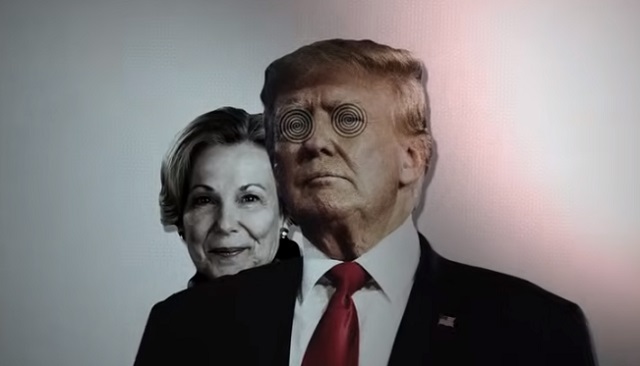
From the Brownstone Institute
BY
According to Birx, she intentionally buried the more draconian elements of the lockdowns in text at the end of long documents, theorizing (correctly apparently) that most reporters or readers would just “skim” the document and would not focus on how extreme and unprecedented these mandates actually were.
Most Americans will remember Dr. Deborah Birx as the “scarf lady” who served on the White House’s Covid Response Team beginning in February 2020.
According to a recently-released (but little-seen) 24-minute mini-documentary, it was Birx – even more so than Anthony Fauci – who was responsible for government “guidelines,” almost all of which proved to be unnecessary and disastrous for the country.
According to the documentary, the guidelines ran counter to President Trump’s initial comments on Covid, but ultimately “toppled the White House (and Trump) without a shot being fired.”
The mini-documentary (“It Wasn’t Fauci: How the Deep State Really Played Trump”) was produced by Good Kid Productions. Not surprisingly, the scathing 24-minute video has received relatively few views on YouTube (only 46,500 since it was published 40 days ago on Feb. 26).
I learned of the documentary from a colleague at Brownstone Institute, who added his opinion that “Birx (is) far more culpable than Fauci in the Covid disaster…Well worth the time to see the damage an utter non-scientist, CIA-connected, bureaucrat can do to make sure things are maximally bad.”
I agree; the significant role played by Birx in the catastrophic national response to Covid has not received nearly enough attention.
Brought in from out of Nowhere…
From the video presentation, viewers learn that Birx was added to the White House’s Coronavirus Task Force as its coordinator in latter February 2020.
Birx worked closely with Task Force chairman Vice President Mike Pence, a man one suspects will not be treated well by future historians.
According to the documentary, “career bureaucrats” like Birx somehow seized control of the executive branch of government and were able to issue orders to mayors and governors which effectively “shut down the country.”
These bureaucrats were often incompetent in their prior jobs as was Birx, who’d previously served as a scientist (ha!) in the Army before leading the government’s effort to “fight AIDS in Africa” (via the PEPFAR Program).
When Birx was installed as coordinator of Covid Response she simply rehashed her own playbook for fighting AIDS in Africa, say the filmmakers.
The three tenets of this response were:
- “Treat every case of this virus as a killer.”
- “Focus on children,” who, the public was told, were being infected and hospitalized in large numbers and were a main conduit for spreading the virus.
- “Get to zero cases as soon as possible.” (The “Zero Covid” goal).
The documentary primarily uses quotes from Scott Atlas, the White House Task Force’s one skeptic, to show that all three tenets were false.
Argued Atlas: Covid was not a killer – or a genuine mortality risk – to “99.95 percent” of the population. Children had virtually zero risk of death or hospitalization from Covid. And there was no way to get to “zero cases.”
Atlas Didn’t Shrug, but was Ignored…
Furthermore, the documentary convincingly illustrates how the views of Atlas were ignored and how, at some point, his ability to speak to the press was curtailed or eliminated.
For example, when Atlas organized a meeting for President Trump with Covid-response skeptics (including the authors of the Great Barrington Declaration) this meeting was schedule to last only five minutes.
The documentary also presents a report from the inspector general of the Department of State that was highly critical of Birx’s management style with the African “AIDS relief” program she headed.
Among other claims, the report said she was “dictatorial” in her dealings with subordinates and often “issued threats” to those who disagreed with her approach.
Shockingly, this highly-critical report was published just a month before she was appointed medical coordinator of the Coronavirus Task Force.
A particularly distressing sound bite from Birx lets viewers hear her opinion on how controversial “guidance” might be implemented with little pushback.
According to Birx, she intentionally buried the more draconian elements of the lockdowns in text at the end of long documents, theorizing (correctly apparently) that most reporters or readers would just “skim” the document and would not focus on how extreme and unprecedented these mandates actually were.
The documentary points out that Birx’s prescriptions and those of President Trump were often in complete conflict.
Birx, according to the documentary, once pointed this out to Vice President Pence, who told her to keep doing what she believed.
Indeed, the Vice President gave Birx full use of Air Force 2 so she could more easily travel across the country, spreading her lockdown message to governors, mayors, and other influencers.
Several Covid skeptic writers, including Jeffrey Tucker of Brownstone Institute, have noted that President Trump himself went from an opponent of draconian lockdowns to an avid supporter of these responses in a period of just one or two days (the pivotal change happened on or around March 10th, 2020, according to Tucker).
Whoever or whatever caused this change in position, it does not seem to be a coincidence that this about-face happened shortly after Birx – a former military officer – was named to an important position on the Task Force.
(Personally, I don’t give Anthony Fauci a pass as I’ve always figured he’s a “dark master” at manipulating members of the science/medical/government complex to achieve his own desired results.)
This documentary highlights the crucial role played by Deborah Birx and, more generally, how unknown bureaucrats can make decisions that turn the world upside-down.
That is, most Americans probably think presidents are in charge, but, often, they’re really not. These real rulers of society, one suspects, would include members of the so-called Deep State, who have no doubt installed sycophants like Fauci and Birx in positions of power.
I definitely recommend this 24-minute video.
A Sample of Reader Comments…
I also enjoyed the Reader Comments that followed this video. The first comment is from my Brownstone colleague who brought this documentary to my attention:
“… As I said, things can change over the period of 20 years but in the case of Birx/Fauci, I do not believe so. I have never seen people entrenched in the bureaucracy change.”
Other comments from the people who have viewed the mini-documentary on YouTube:
“Pence needs to be held accountable.”
“What does Debbie’s bank account look like?”
“(The) final assessment of President Trump at the 23:30 mark is, while painful, accurate. He got rolled.”
“This is very hard to find on YouTube. You can literally search the title and it doesn’t come up.”
“Excellent summary, hope this goes viral. Lots of lessons to learn for future generations.”
“Eye opening. Great reporting.”
Post from One Month Ago…
“37 likes after 3 years of the most controversial and divisive action in recent history. How can this be?”
“Oh never mind. YouTube hid it from the public for years.”
“Probably hasn’t been taken down yet for that reason, relatively low views.”
“Thanks for this! Sounds like everyone below President Trump was on a power trip and I didn’t think it was possible to despise Pence more than I already do.”
“…the backing of CDC, legacy media, WHO and government schools, business folding in fear are ALL responsible. Accountability for every person and agency is paramount!”
“Should be noted that her work on AIDS in Africa was just as useless and damaging.”
“First, any mature, adult woman who speaks with that much vocal fry should be immediately suspect. And the glee with which she recounts her role at undermining POTUS is remarkable and repulsive. This woman should NEVER be allowed to operate the levers of power again.”
Republished from the author’s Substack
-

 Alberta2 days ago
Alberta2 days agoCoutts Three verdict: A warning to protestors who act as liaison with police
-
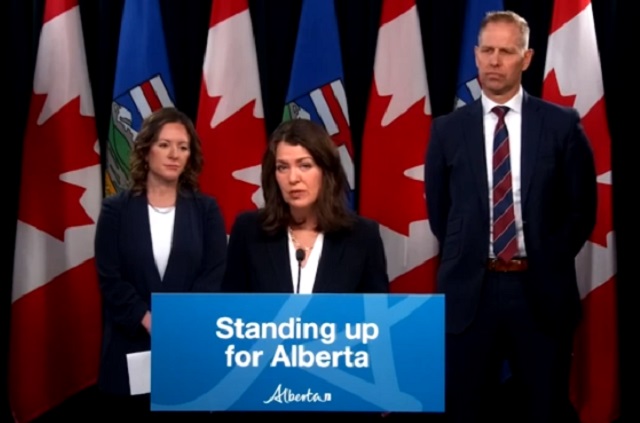
 Alberta2 days ago
Alberta2 days agoAlberta moves to protect Edmonton park from Trudeau government’s ‘diversity’ plan
-
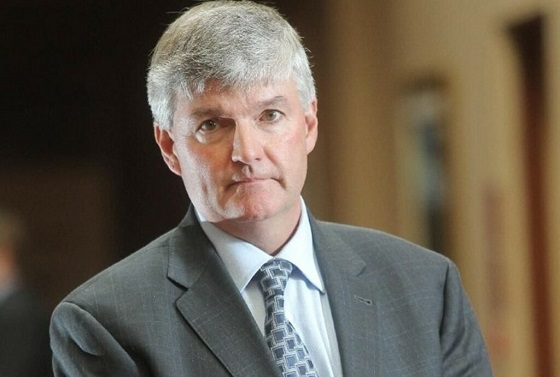
 Energy2 days ago
Energy2 days agoCanada Has All the Elements to be a Winner in Global Energy — Now Let’s Do It
-
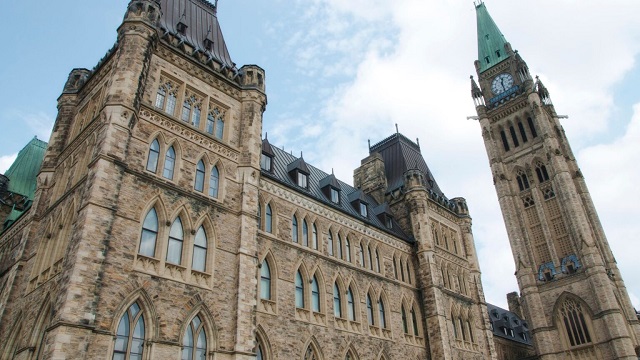
 Freedom Convoy2 days ago
Freedom Convoy2 days agoOttawa spent “excessive” $2.2 million fighting Emergencies Act challenge
-

 Brownstone Institute2 days ago
Brownstone Institute2 days agoA Coup Without Firing a Shot
-

 Bruce Dowbiggin2 days ago
Bruce Dowbiggin2 days agoCoyotes Ugly: The Sad Obsession Of Gary Bettman
-
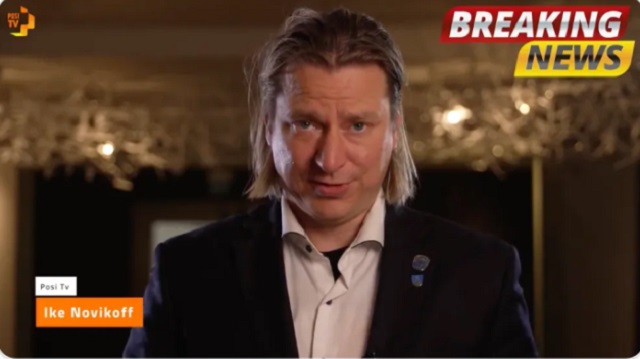
 COVID-192 days ago
COVID-192 days agoWHO Official Admits the Truth About Passports
-
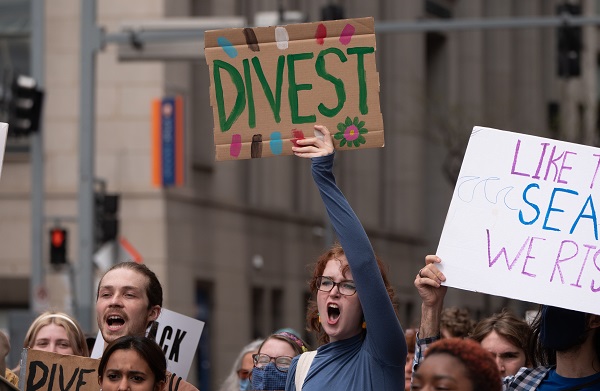
 Energy2 days ago
Energy2 days agoAnti-LNG activists have decided that they now actually care for LNG investors after years of calling to divest






